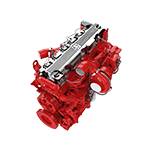Dec . 05, 2024 14:15 Back to list
rear brake drum
Understanding Rear Brake Drums Anatomy, Function, and Maintenance
Rear brake drums are a crucial component of a vehicle's braking system, ensuring safe and effective stopping power. While many drivers may be more familiar with disc brakes, which have gained popularity in recent years, brake drums still play a vital role in many vehicles, particularly in trucks and older models. This article will delve into the anatomy, function, and maintenance of rear brake drums, shedding light on their importance in vehicle safety.
Anatomy of Rear Brake Drums
A rear brake drum is a cylindrical component mounted on the vehicle's rear axle. It encases the brake shoes and is connected to the wheel hub. When the brake pedal is engaged, the brake shoes are pushed outward against the inside surface of the drum, creating friction that slows down the rotation of the wheel. The primary components of a rear brake drum system include the drum itself, brake shoes, wheel cylinder, and adjustment mechanism.
The drum is made of durable cast iron or aluminum, designed to withstand the high temperatures generated during braking. The interior surface of the drum must be smooth to provide optimal contact with the brake shoes. Brake shoes are lined with a friction material that provides the necessary grip to slow down the vehicle. The wheel cylinder, a hydraulic component, pushes the brake shoes apart when the brakes are applied.
Function of Rear Brake Drums
The primary function of rear brake drums is to facilitate the vehicle's stopping process. When pressure is applied to the brake pedal, hydraulic fluid from the master cylinder flows into the wheel cylinders. This action pushes the brake shoes against the drum, generating friction. The force of this friction is what slows down the wheel and, consequently, the entire vehicle.
Rear brake drums are particularly effective in situations where a high braking force is required, such as when carrying heavy loads. Their design allows for a larger surface area for the brake shoes to contact, which can provide increased stopping power compared to disc brakes in specific scenarios. Moreover, rear brake drums tend to be more resistant to fading over prolonged use, making them a reliable option for certain vehicles.
Maintenance of Rear Brake Drums
rear brake drum

Like any vehicle component, rear brake drums require regular maintenance to ensure optimal performance and safety. Here are some essential maintenance checks
1. Inspection Regularly inspect the brake drums for signs of wear or damage. Look for cracks, grooves, or scoring on the surface. If the drum is excessively worn, it may need to be machined or replaced.
2. Brake Shoes Check the condition of the brake shoes. The friction material should be intact, and there should be sufficient material left. If they are worn down, replace them to maintain effective braking performance.
3. Adjustment Many brake drum systems have an automatic or manual adjustment mechanism. Ensure that the brakes are correctly adjusted to avoid dragging, which can lead to overheating and premature wear.
4. Cleaning Dirt and debris can accumulate inside the drum, affecting performance. Clean the drum and the brake shoes with brake cleaner to remove contaminants.
5. Hydraulic System Inspect the wheel cylinder for leaks. A leak can lead to reduced braking performance and may require replacement.
Conclusion
Rear brake drums are a fundamental aspect of a vehicle's braking system, especially in vehicles designed for heavy loads or those using older technology. Understanding their anatomy, function, and maintenance can help ensure they operate effectively, contributing to overall driving safety. Regular inspections and maintenance not only enhance performance but also extend the life of the components involved. For drivers, a basic knowledge of rear brake drums underscores the importance of a well-maintained braking system, vital for safe and confident driving.
-
HINO Industrial Efficiency-Jiangsu Hino Industrial|Productivity Optimization&Cost Reduction
NewsJul.12,2025
-
HINO-¡Ң���ຽ��е��������˾|Advanced Industrial Solutions&Energy Efficiency
NewsJul.12,2025
-
Premium Brake Drum Iveco – Durable Drum Brake Drum & Brake Shoe Solutions
NewsJul.08,2025
-
High-Performance Brake Drum Liza for Enhanced Safety Reliable Drum Brake Drum & Brake Shoe Solutions
NewsJul.08,2025
-
High-Quality Brake Drum MAZ – Durable Drum Brake Drum & Brake Drum and Brake Shoe for Optimal Performance
NewsJul.07,2025
-
High-Quality Brake Drum Kamaz for Reliable Performance Durable Drum Brake Drum & Brake Shoes
NewsJul.07,2025
